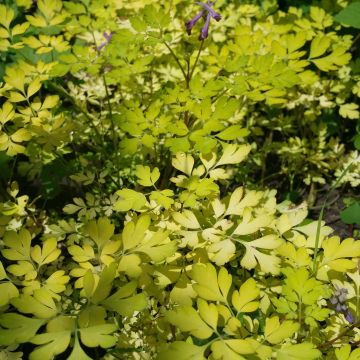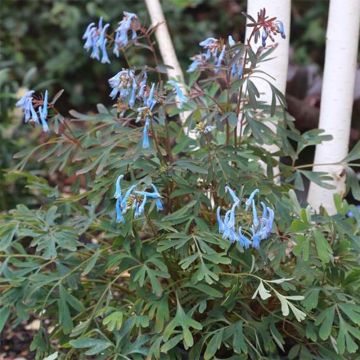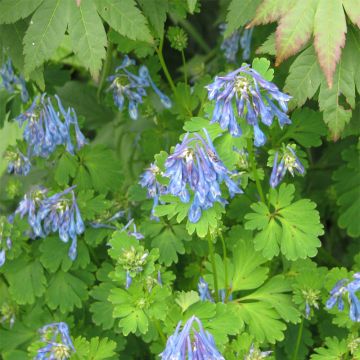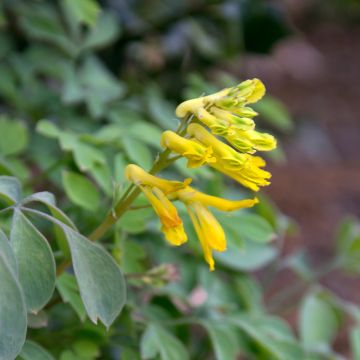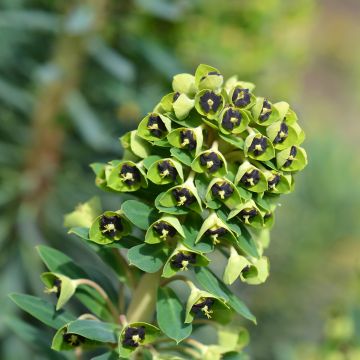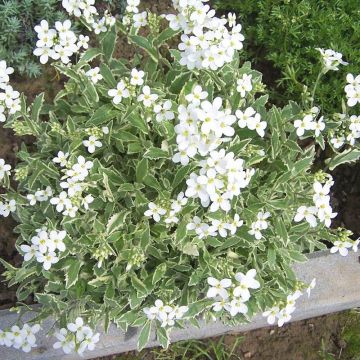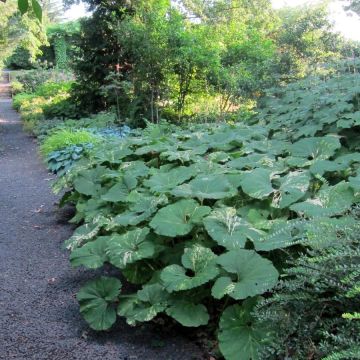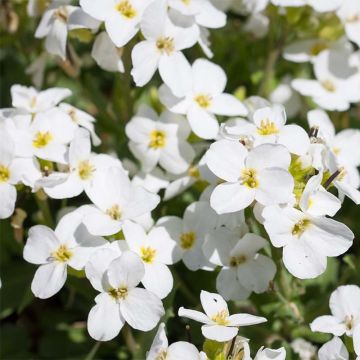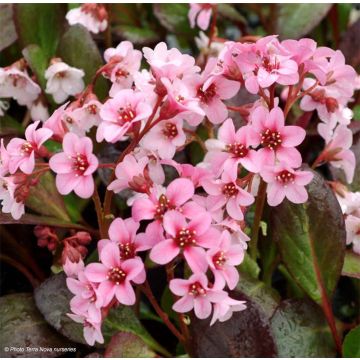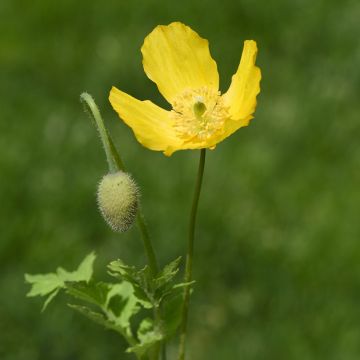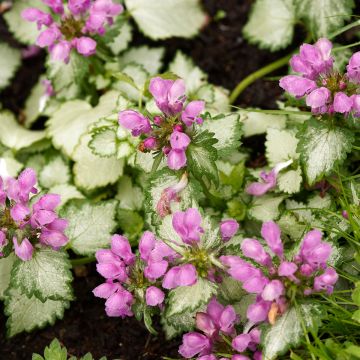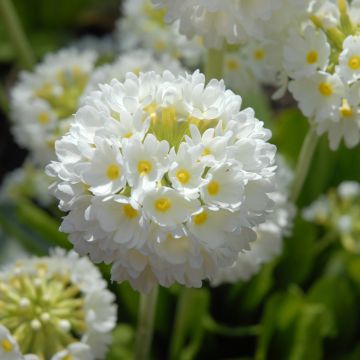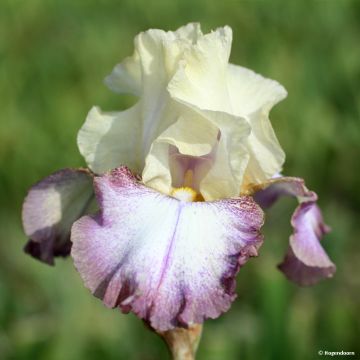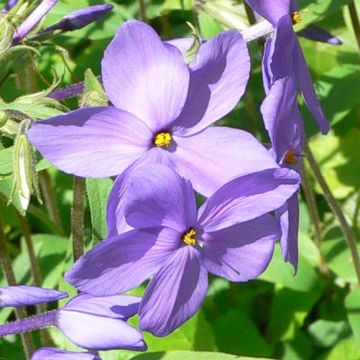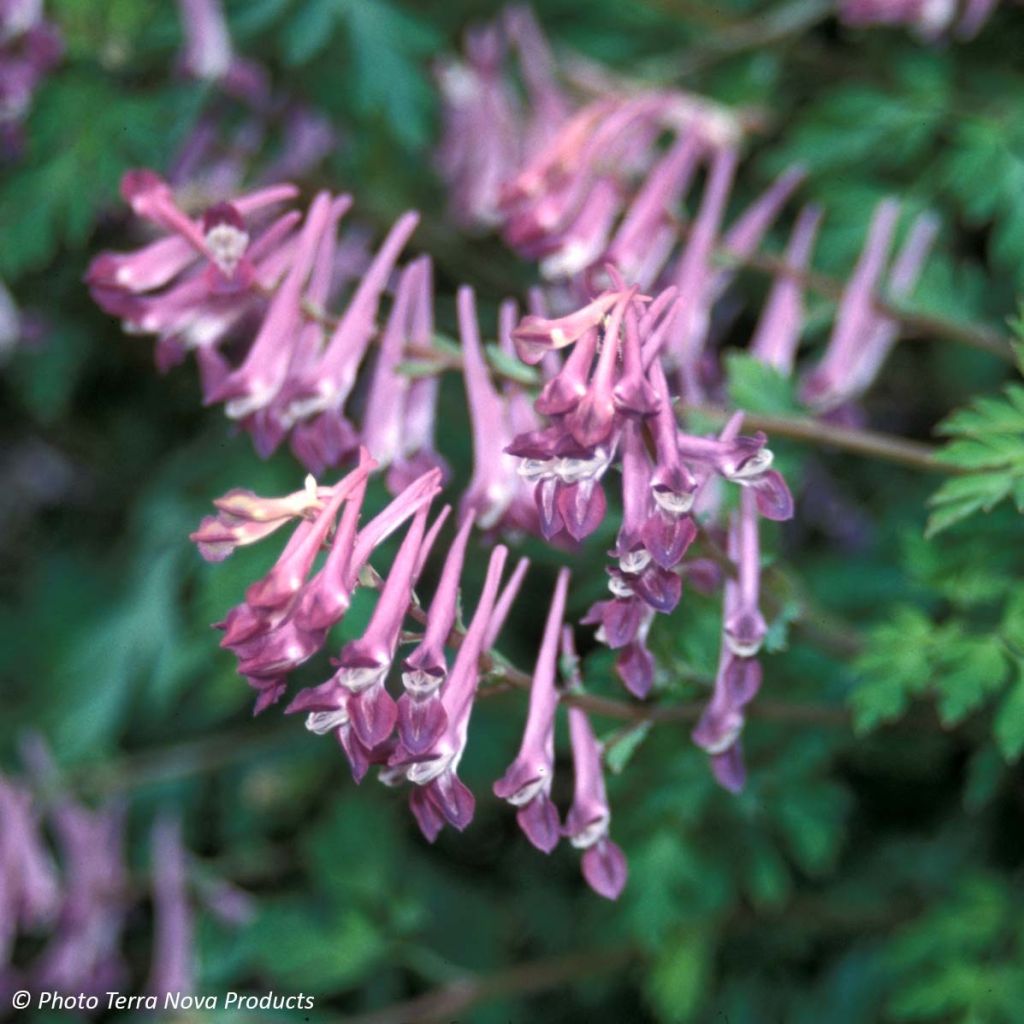

Corydalis Blackberry Wine - Hybrid Corydalis
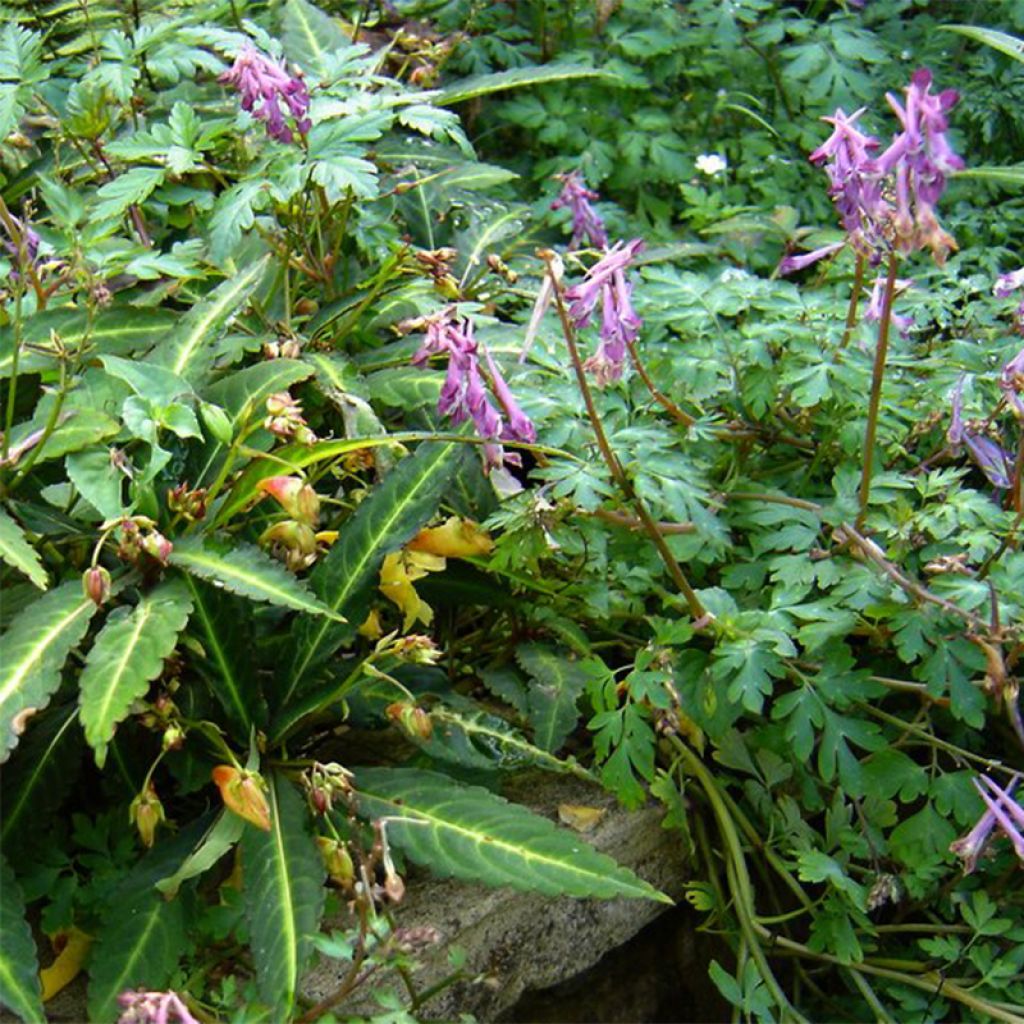

Corydalis Blackberry Wine - Corydale hybride2
Corydalis Blackberry Wine - Hybrid Corydalis
Corydalis Blackberry Wine
Fumewort
Were in a flowerpot, have endured snow and frost. In a very bad condition. No flowers in sight.
nicole M., 16/04/2018
This plant carries a 12 months recovery warranty
More information
We guarantee the quality of our plants for a full growing cycle, and will replace at our expense any plant that fails to recover under normal climatic and planting conditions.
From €5.90 for pickup delivery and €6.90 for home delivery
Express home delivery from €8.90.
Does this plant fit my garden?
Set up your Plantfit profile →
Description
Corydalis 'Blackberry Wine' is undoubtedly one of the best hybrids resulting from the union of these perennials from China. What stands out the most in this extraordinary plant are its bright flowers with long tubes of violet-pink, and its dentate foliage of fern green-blue. Besides these aesthetic qualities, it is easy to cultivate and has numerous uses in moist soil, from ground cover to hanging baskets, and even for covering shaded walls.
The hybrid Corydalis 'Blackberry Wine' belongs to the family Fumariaceae. It is a hybrid obtained by cross-breeding species from China. The relatively slow growth of this Corydalis will allow it to spread up to 45 cm (18in) in width, with a height of 30 cm (12in). It forms a compact and dense shrub, which slowly spreads as a ground cover thanks to its stolons. The foliage, carried by reddish stems, is deciduous and has a refined blue-green powdery tint. Finely dissected, it resembles that of bleeding hearts, fumitories, ferns, or chervil. The flowering period is surprisingly long and, according to some, fragrant. It begins in May and continues until the end of summer in cool climates. Under hotter climates, the plant tends to go into dormancy during summer and then re-blooms in autumn. The flowers, resembling small tubes about 25 mm (1in) in length, have a long spur. Each flower exhibits areas that range in colour from white at the corolla tips to pinkish-purple, reaching almost blue-violet. This subtle gradation, painted on the translucent petals, gives the flowering its bright and unique colour.
It is recommended to plant the 'Blackberry Wine' hybrid Corydalis in soil that is deep, light, and rich in humus. Make sure that the soil is always moist and has a neutral to acidic pH. This plant thrives in shade or partial shade, and can even grow under trees or bushes, which means it can handle competition from other plants. During spring, it is advisable to clean the plant by removing any dead foliage.
Corydalis is primarily a shade or partial shade plant that expresses its full potential in woodland areas. It can be paired with other perennials not afraid of competition from tree or shrub roots. Accompany it with the cousin of Solomon's Seal (Uvularia grandiflora), hardy fuchsias, creeping Bugleweed in purple, Japanese anemones, Balkan Digitalis, Tricyrtis, and a carpet of periwinkles, and 'Ivory Heart' Bleeding Heart. This plant also performs very well in pots and creates a beautiful effect in hanging baskets from which it cascades down. Plant this Corydalis above walls, on the north side, or in shady rockeries.
Report an error about the product description
Corydalis Blackberry Wine - Hybrid Corydalis in pictures
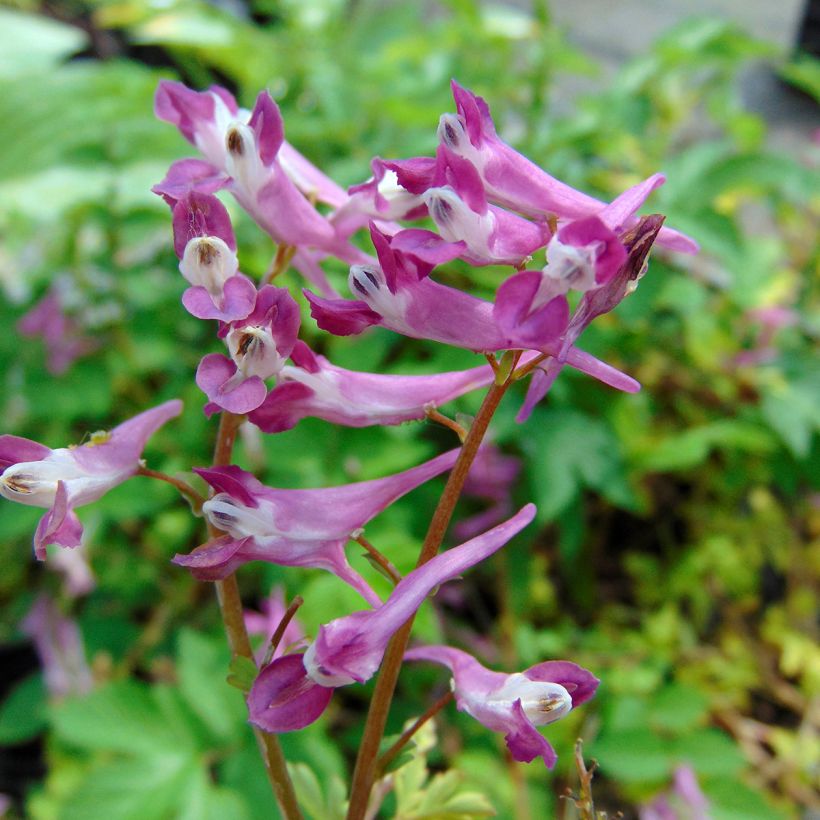

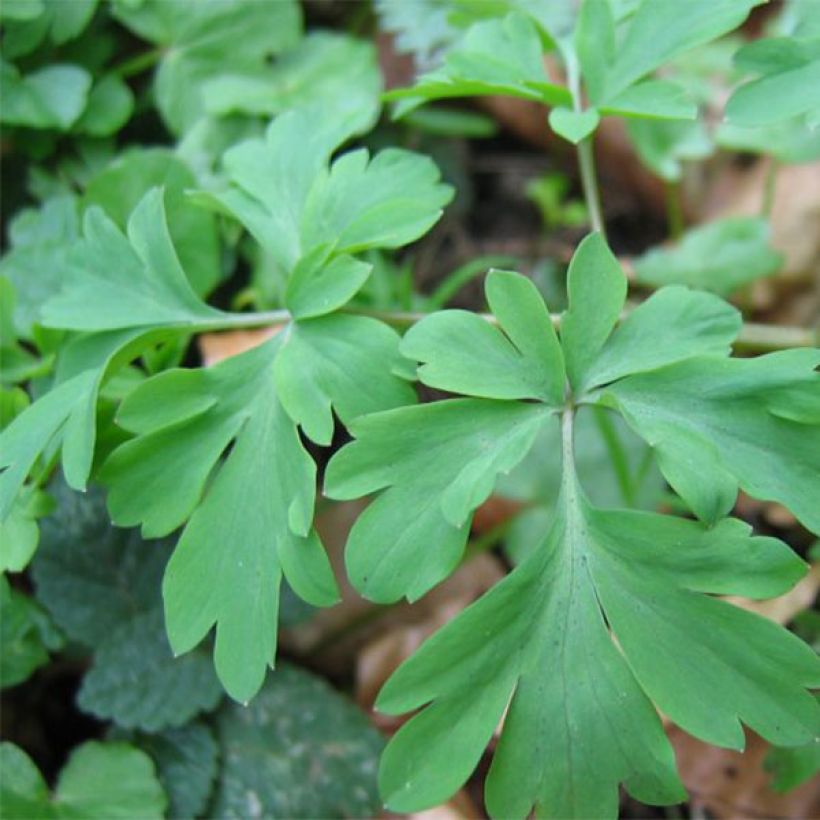

Flowering
Foliage
Plant habit
Botanical data
Corydalis
Blackberry Wine
Fumariaceae - Papaveraceae
Fumewort
Cultivar or hybrid
Other Corydalis
Planting and care
To ensure the healthy growth of the hybrid Corydalis 'Blackberry Wine', plant it in deep, light, and humus-rich soil that is always kept moist. The plant thrives in shaded or partially shaded areas with morning sun, and can even withstand competition from nearby trees or bushes. In the spring, clean the plant by removing any dead foliage to promote new growth.
Planting period
Intended location
Care
-
, onOrder confirmed
Reply from on Promesse de fleurs
Spring flowering perennials
Haven't found what you were looking for?
Hardiness is the lowest winter temperature a plant can endure without suffering serious damage or even dying. However, hardiness is affected by location (a sheltered area, such as a patio), protection (winter cover) and soil type (hardiness is improved by well-drained soil).

Photo Sharing Terms & Conditions
In order to encourage gardeners to interact and share their experiences, Promesse de fleurs offers various media enabling content to be uploaded onto its Site - in particular via the ‘Photo sharing’ module.
The User agrees to refrain from:
- Posting any content that is illegal, prejudicial, insulting, racist, inciteful to hatred, revisionist, contrary to public decency, that infringes on privacy or on the privacy rights of third parties, in particular the publicity rights of persons and goods, intellectual property rights, or the right to privacy.
- Submitting content on behalf of a third party;
- Impersonate the identity of a third party and/or publish any personal information about a third party;
In general, the User undertakes to refrain from any unethical behaviour.
All Content (in particular text, comments, files, images, photos, videos, creative works, etc.), which may be subject to property or intellectual property rights, image or other private rights, shall remain the property of the User, subject to the limited rights granted by the terms of the licence granted by Promesse de fleurs as stated below. Users are at liberty to publish or not to publish such Content on the Site, notably via the ‘Photo Sharing’ facility, and accept that this Content shall be made public and freely accessible, notably on the Internet.
Users further acknowledge, undertake to have ,and guarantee that they hold all necessary rights and permissions to publish such material on the Site, in particular with regard to the legislation in force pertaining to any privacy, property, intellectual property, image, or contractual rights, or rights of any other nature. By publishing such Content on the Site, Users acknowledge accepting full liability as publishers of the Content within the meaning of the law, and grant Promesse de fleurs, free of charge, an inclusive, worldwide licence for the said Content for the entire duration of its publication, including all reproduction, representation, up/downloading, displaying, performing, transmission, and storage rights.
Users also grant permission for their name to be linked to the Content and accept that this link may not always be made available.
By engaging in posting material, Users consent to their Content becoming automatically accessible on the Internet, in particular on other sites and/or blogs and/or web pages of the Promesse de fleurs site, including in particular social pages and the Promesse de fleurs catalogue.
Users may secure the removal of entrusted content free of charge by issuing a simple request via our contact form.
The flowering period indicated on our website applies to countries and regions located in USDA zone 8 (France, the United Kingdom, Ireland, the Netherlands, etc.)
It will vary according to where you live:
- In zones 9 to 10 (Italy, Spain, Greece, etc.), flowering will occur about 2 to 4 weeks earlier.
- In zones 6 to 7 (Germany, Poland, Slovenia, and lower mountainous regions), flowering will be delayed by 2 to 3 weeks.
- In zone 5 (Central Europe, Scandinavia), blooming will be delayed by 3 to 5 weeks.
In temperate climates, pruning of spring-flowering shrubs (forsythia, spireas, etc.) should be done just after flowering.
Pruning of summer-flowering shrubs (Indian Lilac, Perovskia, etc.) can be done in winter or spring.
In cold regions as well as with frost-sensitive plants, avoid pruning too early when severe frosts may still occur.
The planting period indicated on our website applies to countries and regions located in USDA zone 8 (France, United Kingdom, Ireland, Netherlands).
It will vary according to where you live:
- In Mediterranean zones (Marseille, Madrid, Milan, etc.), autumn and winter are the best planting periods.
- In continental zones (Strasbourg, Munich, Vienna, etc.), delay planting by 2 to 3 weeks in spring and bring it forward by 2 to 4 weeks in autumn.
- In mountainous regions (the Alps, Pyrenees, Carpathians, etc.), it is best to plant in late spring (May-June) or late summer (August-September).
The harvesting period indicated on our website applies to countries and regions in USDA zone 8 (France, England, Ireland, the Netherlands).
In colder areas (Scandinavia, Poland, Austria...) fruit and vegetable harvests are likely to be delayed by 3-4 weeks.
In warmer areas (Italy, Spain, Greece, etc.), harvesting will probably take place earlier, depending on weather conditions.
The sowing periods indicated on our website apply to countries and regions within USDA Zone 8 (France, UK, Ireland, Netherlands).
In colder areas (Scandinavia, Poland, Austria...), delay any outdoor sowing by 3-4 weeks, or sow under glass.
In warmer climes (Italy, Spain, Greece, etc.), bring outdoor sowing forward by a few weeks.

































